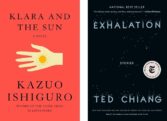


Lacey Jane Henson’s short story “California Girls” was published in MAKE’s Issue #8: “This Everyday” Summer/Fall 2009 edition. Readers meet two dissimilar characters that have left the banality of Carbondale, IL on a road trip headed towards California, or anywhere that has more alluring prospects than southern Illinois. The narrator, Megan is both swellheaded and self-loathing. What’s more, she is chronically cynical and easily aggravated by extremely minute details and trivialities. Her companion and former college roommate, Amy – a needy, but genuine person – bears the brunt of Megan’s anger, whether she receives it directly in the form of some snide remark or indirectly through the nit-picking criticism that litters Megan’s cerebrations about her. In this recent interview Henson elaborates on the metamorphosis of “California Girls,” discusses the characters, and describes her writing process. Henson’s work has also appeared in numerous publications including Third Coast, Vestal Review, The Ne’er-Do-Well Literary Magazine, Nimrod International Literary Journal and the Portland Review. She is the recipient of numerous literary rewards. Currently, Henson lives and works in Seattle. In addition to her administrative job at a law firm, she is the founder and curator of The Off-Hours Reading Series, a quarterly reading series aimed at exposing the work of both University of Washington MFA students and Seattle-area writers.
NM: In the “California Girls” it is apparent early on that Megan and Amy are clearly antithetic. Megan is somewhat of an introvert – I say this because she communicates through thought more than spoken word and I say “somewhat” because she is not too shy to express her feelings – and one of her favorite pastimes is scrutinizing and finding flaws in everyone and everything. Amy, on the other hand, is much more frank. She does not keep an inventory of feelings like Megan, or if she does, there is no way of knowing because the story is told from Megan’s point of view. Can you tell me a little bit about the embryo of these characters?
LJH: One night in college, I met these two girls who were my age, and had been traveling across the country for months. Neither one of them had a concrete idea where they were going, or what the next step was. They were living completely moment-to-moment. It really made an impression me, probably because I would have never thought of doing something like that myself at the time. I thought it would be cool to try and write a story about people in a similar situation. When I started writing, Megan’s voice developed quickly. Following her voice took the story to different places than I would’ve expected it to go, some of them dark.
I’ve always romanticized road trips, too, and stories about them. Even though they might be considered cliché – they just never get old for me. I think it’s interesting how the dynamic of a relationship can shift (for better or worse) during a road trip, in ways that it wouldn’t otherwise. I’m also interested in landscape, particularly unusual or dramatic places like the Southwest. Of course, these things informed the way I wrote the characters, and the story as a whole.
NM: Elaborating on Megan: she seems to carry this aura of cynicism and is portrayed as an easily aggravated, ornery character. She dissects every little detail and idiosyncrasy of people and places (mostly those of Amy’s). At the same time, though, it is apparent that she is anything but content with herself as a person. Is this tendency to over-criticize a sort of deflection of her own self-loathsome feelings?
LJH: Yes, but maybe it’s more like an extension of her low self-esteem, since she does criticize herself as harshly as everything else. She’s not deflecting much. Although, I think even if she were happier with herself, she wouldn’t entirely lose that judging quality of her personality. She’d always be a judger, but maybe a little less mean.
NM: I’ve read a number of your short stories and I’d like to know about your writing process. Stories such as “The California Girls”, “Trigger” and “One-oh-One,” these seem like very personal stories. Is there any element of your own specific life experiences present in these works?
LJH: Of course. I think most writers would say there are some elements of their own experience in their work. Part of the reason I love writing is the way it allows you to play around with life, to frame and re-frame experience in the context of story. And then, for me, looking at life as art piques a kind of curiosity about the world. I always want to maintain that sense of curiosity. It keeps things from getting boring.
It’s interesting, too, how the lines between fiction and non-fiction are blurring. There’s a great book about this that’s coming out about this by a former professor of mine, David Shields, called Reality Hunger.
NM: An interesting and entertaining tendency that I’ve picked up on in your writing is an ability to weave humor and pain into a sort of literary French braid. In “One-oh-One”, for example, a teenage girl, Natalie, and her younger brother, Kyle, attend a juvenile therapy session for kids dealing with the deaths of their parents (hardly an amusing setting). However, you manage to squeeze comic elements into the story, describing the group leader’s gums as being horse-like and writing that Natalie wouldn’t be all that surprised if she “whinnied.” This is also present in “The California Girls” as we read about several of Megan’s painful life experiences, yet you always manage to provide some comic relief. Sometimes in the form of an out-of-touch and gaudy elderly couple willing to provide a ride into town, and most often with the ubiquitous barrage of witty criticism Megan reserves for Amy (mean, but funny, at times). Can you describe why you write like this?
LJH: I read an essay about the relationship between comedy and tragedy by the poet Cody Walker, in which he refers to “difficult laughter.” He says: “Difficult laughter, the laughter I’m most interested in, may be thought of as two expressions in constant conflict — a guffaw and a gasp; a chuckle caught in a chokehold.” It’s the kind of laughter I’m interested in too – I’ve never written anything that was pure comedy or pure tragedy for that matter. For me, the two are inextricably linked. Also, I think literature, in particular, is a good forum for uncomfortable humor. Reading is generally a very private experience. It can allow people to laugh about things that might make them self-conscious in a public space.
I think another part of it is that everyone in my family really appreciates humor, even when we’ve gone through difficult times. In fact, maybe even more so during difficult times. So, I’m sure growing up in that environment has an effect on my writing as well.
NM: When you reference Walker’s definition of this coagulation of comedy and humor as “difficult laughter,” do you intend to almost coax some readers into chuckling in the midst of very serious topics? In doing so, is part of your mission aimed at informing people that it’s perfectly all right to resort to humor during tragedy or austere moments, as sort of a reprieve?
LJH: I agree with that sentiment, but I didn’t have that particular moral in mind when I wrote these stories. To me, that was just the way the characters viewed the situations they found themselves in.
![]()
____________
Nick Moroni lives and works in Chicago as a freelance journalist and his writing and photography has appeared in the Chicago Reader, The Wedneday Journal, Austin Weekly, Forest Park Review, The Riverside-Brookfield Landmark and Thresholds. He is in graduate school at DePaul University pursuing an MA in Journalism. Nick particularly enjoys Hunter S. Thompson’s writing, Robert Frank’s photographs, jazz clubs, most cheese, ales, traveling, and the atypical. He received recegnotion from the Illinois College Press Association for his work in the DePaulia covering the 2016 Olympic city candidacy rally in Chicago. He was awarded first place for News Story and In-Depth Reporting, and third place for News Photograph in the Association’s 2009 recognition ceremony.
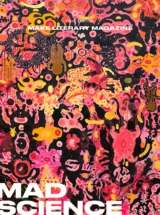
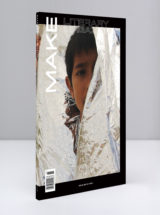
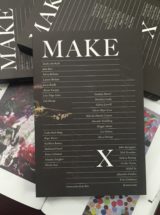
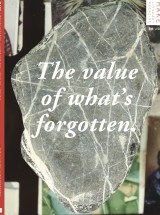
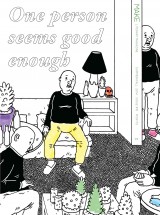
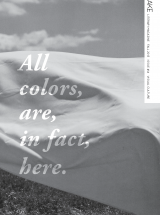
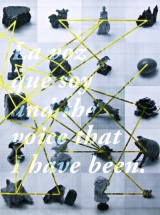
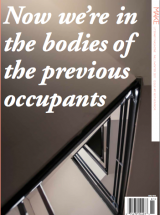
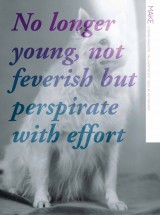
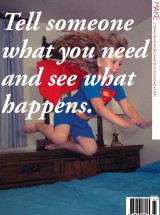
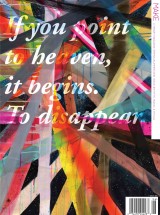
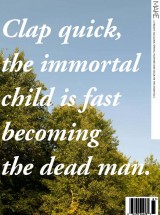
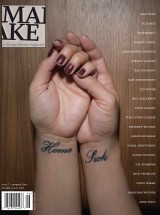
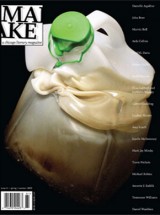
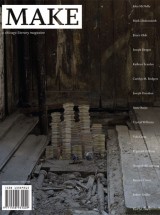
click to see who
MAKE Magazine Publisher MAKE Literary Productions Managing Editor Chamandeep Bains Assistant Managing Editor and Web Editor Kenneth Guay Fiction Editor Kamilah Foreman Nonfiction Editor Jessica Anne Poetry Editor Joel Craig Intercambio Poetry Editor Daniel Borzutzky Intercambio Prose Editor Brenda Lozano Latin American Art Portfolio Editor Alejandro Almanza Pereda Reviews Editor Mark Molloy Portfolio Art Editor Sarah Kramer Creative Director Joshua Hauth, Hauthwares Webmaster Johnathan Crawford Proofreader/Copy Editor Sarah Kramer Associate Fiction Editors LC Fiore, Jim Kourlas, Kerstin Schaars Contributing Editors Kyle Beachy, Steffi Drewes, Katie Geha, Kathleen Rooney Social Media Coordinator Jennifer De Poorter
MAKE Literary Productions, NFP Co-directors, Sarah Dodson and Joel Craig